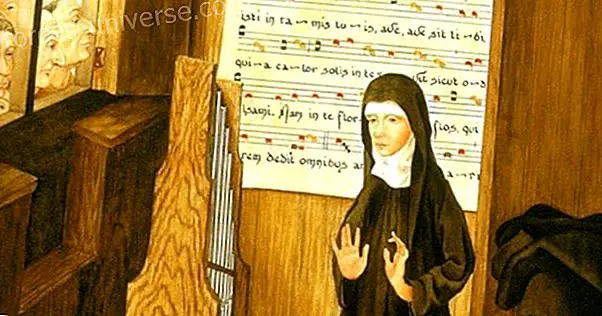Observe the butterfly attracted by the flame.
His destiny is visible to us, but ignored by her.
(Maximum Sufi)
The author of this text is not a specialist in Sufism, and, much less, an initiate in this system of thought, which can constitute, to some extent, an advantage in relation to the objectives that are intended to be achieved. In fact, the approach of certain topics by specialized persons1, on the one hand, provides us with very precise elements on the referred topics, on the other hand, it generally has the disadvantage of reducing them to a too individualized dimension, without evidencing the relationship with other aspects of reality. That has been, in regard to culture, the most frequent trend. Now, however, another attitude is required. In the current historical moment, esoteric work must not only establish the necessary relationship of harmony with the whole, but also make a disregard of certain teachings, which have been maintained, in a way, "veiled" 2. Which obviously does not mean that you have to lower the level at which Esoteric Science is necessarily located. Today, as in the past, there are values that must be respected; and who intends to advance in the Way of Knowledge should be cautious in relation to the proliferation, with almost exclusively commercial purposes, of a false esoteric literature, as well as in relation to a certain type of experiences and paranormal manifestations, coming almost always from levels lower consciousness.
This work of concealment requires that the esoteric thinking of the different systems be studied and compared, since Tradition is unique. Thus, the comparative study of Christianity, Buddhism, Taoism, Sufism ... will allow us to better understand that unique Truth that is underlying in all these systems; but we must never forget that this same Tradition is and has been presented in multiple forms, perfectly adapted to the spirit of the people to whom they were addressed. Hence, for the Western world - whose mentality was formed primarily with the basis of the New Testament - the easiest or, best, least difficult, means to reach Knowledge, is to follow the esoteric thinking that is based on Tradition Christian
We are going, therefore, to approach Sufism, not with the attitude of the specialist, that we are not, but following a perspective in which we are going to place ourselves: comparing this system of thought with others and, mainly, with the Western tradition, in the sense of, on the one hand procuring that Truth common to all of them, and on the other, determining what may be specific to Sufism.
What is Sufism?
According to Professor RA Nicholson, considered the best European specialist in Sufism 4, this is indefinable 5. However, there are some aspects that we should not stop referring to: the first is that Sufism is not a religion, but an essence of all religions in a universal method of thinking; the second is to consider absolute freedom as an indispensable condition for salvation; The third - and perhaps most important - is to place Love above all things. Thus, Sufism is on top of a whole philosophy of Love that, in its highest exponent, identifies with God, also passing through the identification with all beings 6. Only Love - which is the same God - and not the Intellect, allows to reach the Divine. Al-Sabbâk relates that "God, after creating the Intellect, asked him:" Who am I? "And the Intellect fell silent. Then, God applied to him the sight of the light eye drop of his Oneness, and the Intellect, opening his eyes, said: "You are God, and there is no other Divinity than You", because it was not competing for the Intellect to know God - Al-Sabbâk concludes - unless it is through God himself.
Sufism arose in the eighth century AD 7, constituting, so to speak, the internal aspect of Islamism 8, whose objective is the purification of the heart. Its members are Muslim mystics who organized themselves outside the orthodox authorities who censored them for their individualism and for the aversion to a systematic Koranic teaching. They ended up, however, by recognizing their importance in the field of spirituality, thus allowing the opening in 250 of the Hégira (980 AD) of an official chair of Sufism in the mosque of Cairo.
Contrary to Hinduism - which developed several spiritual methods, separating jnâna (path of Knowledge), bhakti (path of Love) and Karma (path of Action) - Sufism has a synthesis of these three methods. But the emphasis affects, as we have already shown, in Love, which is, simultaneously, Knowledge and Action. And, if there are differences, according to each brotherhood (tarîqa) 9, in general we can say that the Sufism method is based on four fundamental aspects: the incessant invocation (dhikr) of God, forgetting everything that is not Him; meditation (fikr), which only has any value if it opens access to dhikr, the guard of the heart, which results from the reciprocal action of meditation (fikr) and from the irradiation caused by dhikr, from which a “vision arises from the heart ”, which allows to capture the divine Essence; the preservation of the bond with the Master (Sheik), which demands the total obedience of the disciple in relation to everything the Master says. It is said, by the way, that a Master asked two of his disciples to go looking for camels to make them overcome a wall. The first made no attempt to do what the Master asked, arguing that common sense told him that it was impossible to satisfy the Master's request. Then, the Master pushed him away, then asking the other disciple why he was trying the impossible. And he replied that common sense also demonstrated that impossibility, but he knew that the Master intended to test his obedience.
Although Sufism is, of course, an inner Way, it does not exclude, in any way, the outer rules present in the Qur'an; but, on the contrary, he considers them indispensable, even for the holiest and fairest man. An ancient treatise says: "A rule not animated by the spirit of Reality has no value, in the same way that every spirit of Reality not structured by the Law is incomplete." As an inner way, the experiences of the mystics Sufi no they differ essentially from the experiences of the mystics of other religions. Thus, upon entering into communion with God, Al-Hallâj exclaimed: "Anna-lhaqq" (I am the Truth), which immediately reminds us of Jesus' statement: "I am the Way, the Truth and the Life". Evidently statements of this nature are not generally well accepted, and therefore, Hallâj was condemned by Muslims to a cruel death, just as Jesus was condemned by his own people.
Nûri, a disciple of Junnayd, said that the Sufi "is someone who is not linked to anything and is not bound by anything, who does not own anything and is not possessed by anything." This "poverty of spirit" which is also the same ideal of "detachment" expressed by Buddhism, should lead to the extinction of the "I". Thus, in an interesting Sufi poem, it is said that God had said to Moses: "If you saw the Devil, ask him what his key word is" And Moses did so. When he found the Devil, he immediately asked what his keyword was. And the Devil replied: "My keyword is 'I', so never say 'I' if you don't want to look like me."
But, this ideal of "poverty in spirit" finds hardly any correspondence in the attitude of "detachment" from the Masters of Buddhism. It is also the same ideal that Jesus expressed in the Sermon on the Mount ("Happy are the poor in spirit because theirs is the Kingdom of Heaven" - Matthew, 5-3) being passionately followed by Saint Francis of Assisi, who, It is said that he was received, when the Crusades, by an Arab prince who initiated him into Sufism. Then, he preached to the birds a few years after the mystic Sufi Rumi had preached to the dogs.
A philosophy of love
Being a Philosophy of Love, Sufism obviously has much in common with Christianity. Thus, to preserve the guard of the heart, man must show signs of permanent vigilance (mura-qabah), which corresponds, as is known, to the practice of Prayer and vigilance, advised in the New Testament. Only in this way can the divine be known and reach the state of Perfect Man (Ahsantaqw n), who is the one who identifies with God. Its attributes should be humility, patience, fidelity and, above all, truthfulness (sidq), which consists in seeing things as they are, forgetting about itself. Al-Hall j, the greatest scientist of the 10th century, said: `` I became the One I love and the one I love became me. We are two spirits fused in one body. Jesus, expressing the same identification, merely said: "I and the Father are One."
The Perfect Man must, therefore, achieve unity with God. But, for that to be possible, it is necessary to free yourself from all veils of illusion. These veils are divided into two categories: dark veils (temptation, anger, desires) and light veils (chastity, excess humility). These clear veils constitute a dangerous trap, where poorly prepared adherents are easily trapped, because, seeming to lead to the extinction of the yo, they further feed the personality. Unity is expressed through five degrees: 1 There is no other God but Al, 2 There is no other but l, 3 There is no other t but T, 4 There is no other me but Yo, 5 It cannot be formulated, because there is no union or separation, no distancing or approximation. It is the divine world.
For Sufism, man was created with the most admirable proportions (ashan taqw n), having been, immediately, precipitated to the lowest level (asphal syphilfilm). Now, he will have to move from the asphal only asphal to that of ashan taqw n. Jesus explained this long pilgrimage through the Parable of the Prodigal Son.
Although Sufism is the essence of the main religions, it has specific aspects that, as we have seen, characterize its method. Among them, it is customary to attribute special relevance to the cosmic dance of the dervishes, because the dance, for the Suf e, expresses better than the other arts the Divine Creation. While in other arts the artist does not need to be present, in the dance the dancer must be present, thus representing the transcendence and immanence of God. Mevlana, also known as Rumi, was the first dance dervish. Music and dance were the way to express their recognition of God. He then taught his disciples how to proceed: with their feet overlapping, the left one ritually on the right, the right hand in the air to receive the gift of heaven, the sword directed down, to spread knowledge, and should revolve around a center, like the planets revolving around the sun.
Another characteristic aspect of Sufism is its maxims and the funny stories of Narusddin Hodja, a legendary character throughout the Middle East and from which various countries claim nationality. It is, however, a Turkish Suffer who lived in the fourteenth century. The thanks of Narusddin correspond to a kind of caricatured portrait of humanity and must be understood at various levels of depth. Here are some examples:
One day, Narusddin was crossing a river, carrying a teacher on his ship. As Narusddin was very uncultured, he said, at a certain point in the trip, an incorrect word that provoked the professor's laughter. Did you never learn grammar? the teacher asked. No, Narusddin replied. `` Then, you lost half of your life, '' the professor told him. A few minutes later, the boatman asked the professor: "Did the man never learn to swim?" And in response to the teacher's negative response, Narusddin replied: "Then you lost your whole life, because we are going to sink"
The subtle perception of the Sufi allows him to reach unattainable levels of understanding for the common of people. Therefore, you should not see in these stories just a fun, although, in a way, that is also your goal.
Jose Florido
Degree in Romance Philology, Professor of Portuguese Literature and Culture,
Author of several books, including: "Pietro Ubaldi, Reflections"
(edited by the CLUC)
“Unfinished conversation with Alberto Caeiro”, “Agostinho da Silva”
and various didactic works
NOTES:
1.- We insist on the difference that must be established between “specialty” and “function”. Thus, those who specialize generally exercise an activity that isolates themselves from everything that should be integrated; However, he who exercises his function executes it as an individualized expression of that same whole. The function corresponds to the notion that the Hindu doctrine calls swadharma, which represents the realization for each human being, of an activity according to its essence.
2.- The process of disregarding must be done, as far as possible, in accordance with the golden rule: "Say what is necessary, at the right time, and to whom it is necessary."
3 .- We find it appropriate to highlight the fact of spiritual teachers, as phenomenalist and paranormal. Thus, in Deuteronomy XVII, 9-12, we can read: “When you have entered the Earth that the Lord your God has to give you, beware of imitating the abominations of those people. It will not be among you who (...) consults fortune tellers or observes dreams or auguries, or who uses curses, or who is charming, or inquires of the dead the Truth. Because the Lord abominates all these things, and by those evils he will exterminate those peoples at your entrance. ”In this quotation, the“ fortune tellers ”are those who read the future; "Those who use curses and are charming, " are the hypnotists, "who inquires of the dead from the Truth, " refers to the one who invokes the spirits.
4.- There are many possible etymologies for the word "Sufism." However, it is considered, preferably, that Sufism derives from sûf, which designates a white dress, worn by the first mystics as a sign of humility.
5.- "Define" means, according to its etymology, "attribute an end", that is, "determine the extent and limits of an object or a being." Now, due to the universality of Sufism, it is not possible to determine its limits, being, for that reason, indefinable.
6.- The Sufi story that we transcribe below shows the importance attributed to identification: “A man knocks on the door of his beloved's house. A voice is heard: "Who is it?" The man replies: "It's me." And the same voice says: "You cannot enter because there is no room for two people" And the door remained closed. A few months later, he knocked on his beloved's door again. And she asked again: "Who is it?" "It's you." Then the door opened."
7.- This is the first century of the Hégira (emigration), which is the era of the Mohammedans. The Hegira begins on July 16, 622 of our era, when Muhammad fled to Mecca to go into exile in Yatrib. As for the Christian Era, which is based on the Gregorian calendar, counts the time in solar years, the Islamic Era measures them in lunar years, which are eleven days shorter. Thus, all Muslims calculate the years from the date of July 16, 622 (1st day of the lunar year).
8.- Islamism derives from Islam, which is a noun with the same root as the verb aslama, which means "to submit." The active participle of this verb, muslin, designates "the one who submits." Hence the Muslim term, which means "he who submits to God."
9.- From the twelfth century, the Sufis congregated in Brotherhoods (tariqâ), taking advantage of the influence of the great mystics. In chronological order, we indicate the most important: a Quâdirîya - founded by Abd-al-Qâir (1078-1166); to Sohrawardîya - created by Shihâd al-dîn Sohrawardî (1144-1234): to Rifâiya - founded by Ahmad ar-Rifâi (1106-1182); to Kubrâwîya - founded by Najm al-dîn Kubrâ (1145-1221); to Shâdhilîya - founded by Abul Hassan ash-Shâdhilî (1196-1258); to Mawlawîya - founded by Djalâl al-dîn Rumî, called Mawlânâ (1207-1273). The most original practice of this order is the famous cosmic dance that makes the designation of dance dervists attributed to its members; to Naqshabandîya - founded by Bahauddin Naqshabandi (1340-1413).
-> Article seen at: http://www.revistabiosofia.com/






